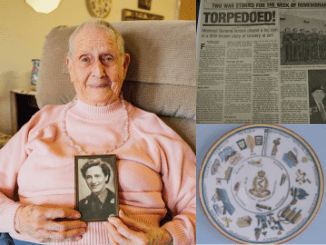
Mrs Madeline Shavalier née Fraser signed up with the Royal Canadian Army Medical Corps thinking she would be helping soldiers returning from battle overseas. Instead she shipped over to the UK treating patients close to London. Later given 48 hours notice to pack and board a ship in Liverpool heading for Italy. Ship torpedoed outside Algeria and having to abandon ship as a result.
Her story in the 2003 LEGION Magazine interview is as modest as it is humble with little to indicate the courage exhibited. Through facilitation of Kent McDonald she honored the project with her signature 3 February 2020.
We are honored to carry your story!
Deployed
Shavalier signed up as a nurse with the Royal Canadian Army Medical Corps. She thought her service would be somewhere in Canada. Deployment overseas was certainly not part of the plan. At the age of 25 as a single woman she apparently met the requirements for the military. Shavalier was soon assigned to the No 14 Canadian General Hospital, activated 23 June 1940, in Montreal. Within a year the 1200 bed unit boarded the MV Stirling Castle bound for United Kingdom.
Over the following two years her unit was stationed at various locations in UK. From May 1942 to late 1943 they were stationed at a hospital located south of London in the open countryside about 2 miles east of Horley[1]https://ezitis.myzen.co.uk/smallfield.html.
48 hours notice
In October 1943 Shavalier and her unit was given a 48 hours notice to pack their things. The order was to prepare to move out with no information of their destination provided.
No 14. Canadian General Hospital sailed from Liverpool on S/S Santa Elena 27 October 1943 in convoy KME-25A[2]https://history.earthsci.carleton.ca/harvey/genealogy/margaret.briggs.2.htm. There was more than 1800 soldiers and nurses on board the ship destined for Egypt and ultimately Naples, Italy. The voyage to the Mediterranean was routine and uneventful and after passing Gibraltar the convoy received support from RAF. Rotation of squadrons was necessary to provide protection for the convoy leaving the convoy exposed while new planes were sent.
The S/S Santa Elena sinking
Just after sunset on 6 November 1943 the convoy is sailing close to Philippeville (today Skikda) of Cape Bougaroun in Algeria. Luftwaffe planes attacks carrying F5B Torpedos and Henschel Hs 293 radio controlled glide bombs.
SS Santa Elena is hit by a torpedo rendering her engine and power knocked out. Slowly the ship began to drift and take on water listing to port with about 20 degrees. While Shavalier and the others are still below deck the ship takes a second hit. As a bomb crashes into the deck near the stern the order to abandon ship is given.
Shavalier and the other nurses put on life jackets and leaped into life boats. Some of the soldiers jumped into the water, many of them clung to the sides of the lifeboats. From 7 to about 11 p.m that night they floated around in the quiet dark. Then came a shadow of a ship…
In the distance we saw a light, but we were a little nervous: we didn’t know which side they were on. It turned out to be our side.
Madeline Shavalier on the rescue after being torpedoed in the Mediterranean.
That was a long time to be in a little boat. We were in dangerous waters.
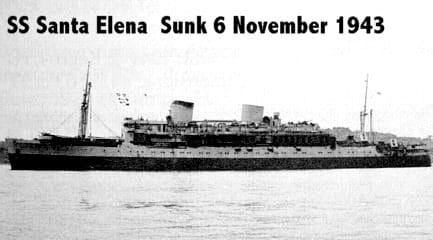
Rescue and loss
The American destroyer USS Tillman (DD-641) rescues two boat loads including thirty-six of the female staff. While the S.S Monterey, another former luxury liner turned troop ship, picks up other remaining survivors with Shavalier being one. She recall climbing up the scramble net off the side of the ship and seeing at least two other nurses fall off into the water. Remarkably they are all saved with no casualties.
The next day Shavalier watches the Santa Elena sink at position 37°13′N 6°21′E while S.S Monterey attempts to tow the stricken ship. As fate will have it four of the crew perishes in the final abandonment of the ship.
Italy and front line service
No. 14 General Canadian Hospital with Shavalier eventually arrived in Naples harbor. After disembarking they proceed to Caserta where the unit is finally fully reunited. Here they set up the hospital about 20 miles north of Naples treating soldiers wounded in battle at Cassino brought by ambulance. For about eight months the unit would remain in Caserta before relocating closer to the front as allied forces broke through the Trasimene Line.
Early August 1944 No 14 GCH is relocated and set up in an abandoned tobacco factory in Perugia, north of Rome. Several nurses are sent closer to the front to form surgical teams consisting of two doctors, two nursing sisters and one orderly. Shavalier workes long hours performing major surgery under canvas for two weeks before reinforcements arrived. The longest shift was two full days and one night, only stopping for food and coffee. Meanwhile the fighting nearby was intense along the Gothic Line and Hitler Line.
No 14 GCH is disbanded in May 1945 and Madeline Shavalier, then Fraser, returns home to Montreal, Canada. While visiting a friend in Niagra Falls she is set up on a blind date with her future husband to be.
Volunteers
Obtaining the signatures for The Log Book project is half the battle, writing about them with the due care and attention that each deserves is an entirely other matter. Make no mistake, there is a grass roots legion of persons around the world who have volunteered to keep the book moving. The project is entirely a success because of their care and their generosity with their time – a most precious asset.
Project supporter and personal friend Kent McDonald is one of those many souls who secured this latest signatory; 105 year old Madeline Shavalier née Fraser.
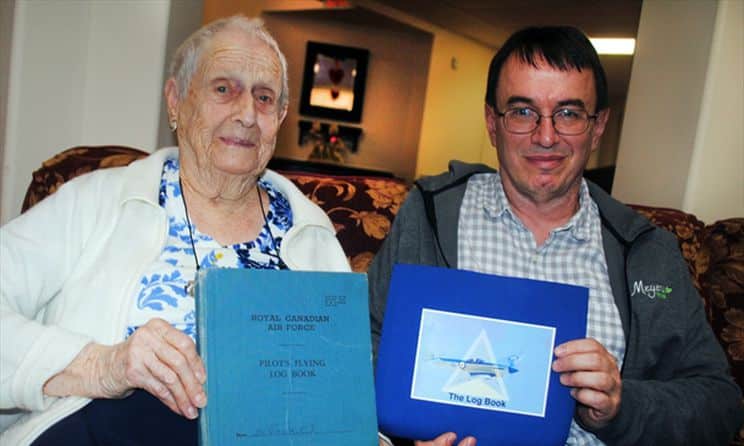
There is also a whole new appreciation for professional journalists who take the time to thoroughly research and present their work. This article was carefully written by the author Mr Paul Forsyth, and the project is deeply grateful to him for making the effort.
References

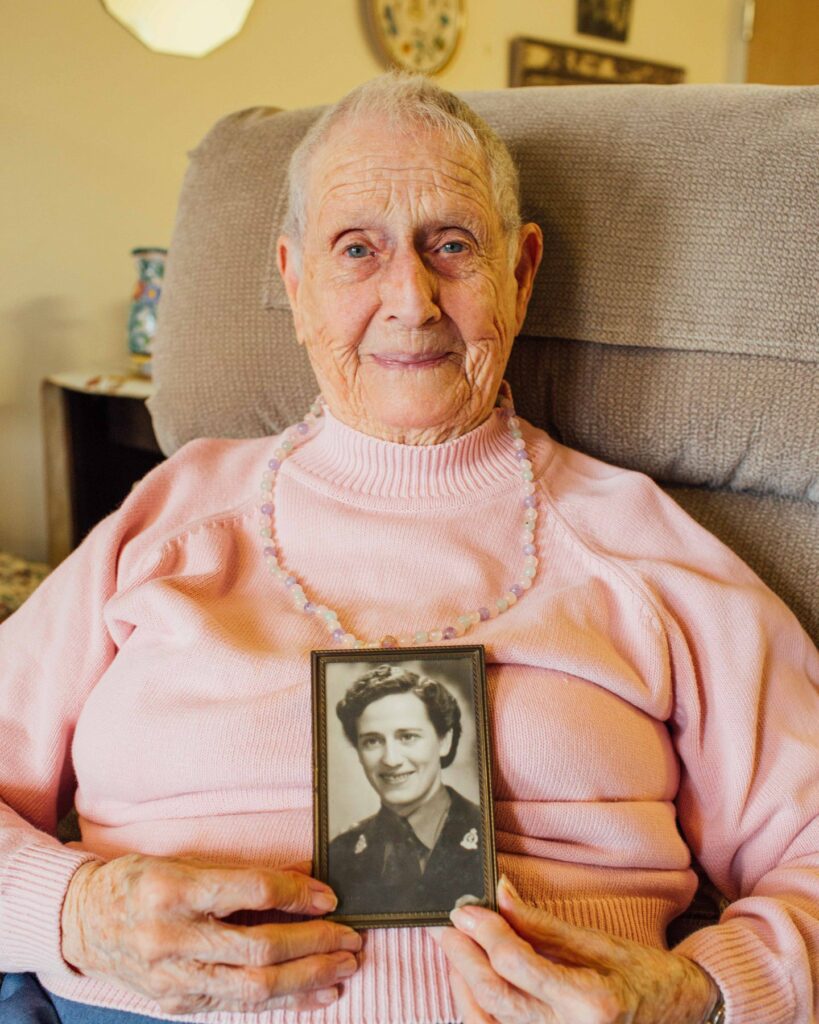

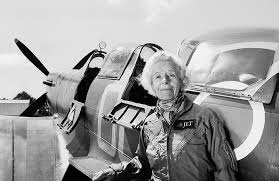
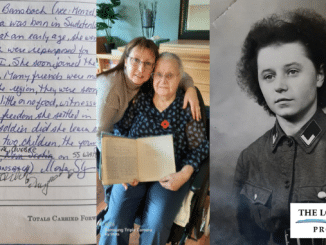
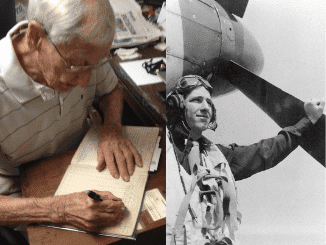
Be the first to comment